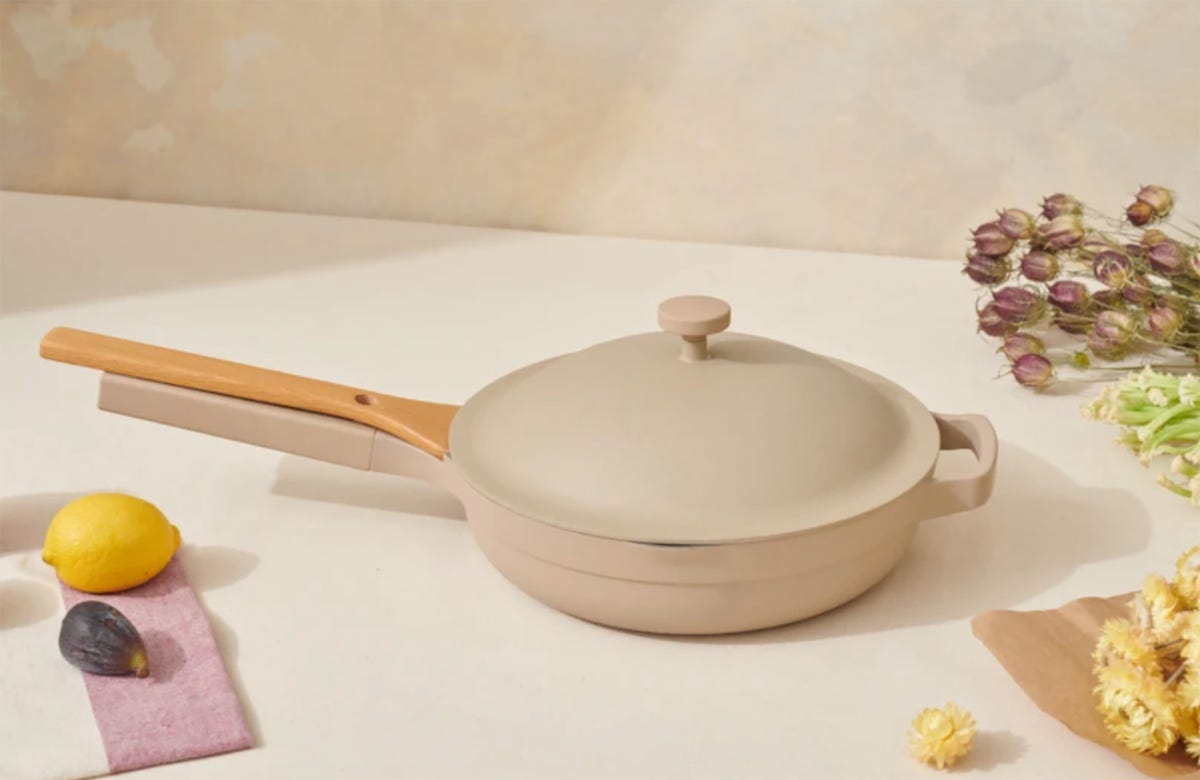Nonstick cookware is affordable to buy, convenient to use and a cinch to clean, but many still wonder if Teflon and other nonstick cooking materials are safe to use. The answer is yes. Well, mostly. Teflon is one cookware material with a good deal of drama surrounding it. Certain types of nonstick cookware were once found to be toxic and if the pots and pans you use are more than 10 years old, they may still be and you’re long overdue to chuck them and start over. But worry not, nonstick cookware is budget-friendly (more on that in a bit) and easy to care for.
Nonstick or Teflon is a popular choice for home cooks. The big draw is that food won’t stick to pots and pans coated with Teflon the way it does to other metal materials, so it’s easy to flip a pancake or remove a cooked egg. Nonstick is also very easy to clean, generally taking no more than a few seconds to wash by hand.
But when it comes to whether or not nonstick cookware is safe or not, there’s some key information and we’ve got it all here. Here’s what you should know about nonstick, Teflon cookware and how to tell if your nonstick pots and pans are safe for use.
What is Teflon, and is it safe to cook with?
Teflon is a brand name for a synthetic chemical called polytetrafluoroethylene that’s used in many household products from wire coatings to fabric protectors and kitchen cookware, too. The knock on Teflon is that it’s unsafe if consumed or absorbed into the body and can increase the chances of cancer and other diseases. While studies have shown some connections (more on that below), Teflon still exists and is used to make cookware, but the safety concerns around Teflon are mostly a thing of the past.
And I stress mostly. Here’s why…
While the brand Teflon may be associated with a risk of cancer, it’s actually a chemical formerly used in the making of Teflon called PFOA that’s to blame. According to the Centers for Disease Control and Prevention, perfluorooctanoic acid is a manufactured perfluorochemical developed in the 1930s and used to make fluoropolymer coatings and products that resist heat, oil, stains, grease and water.


